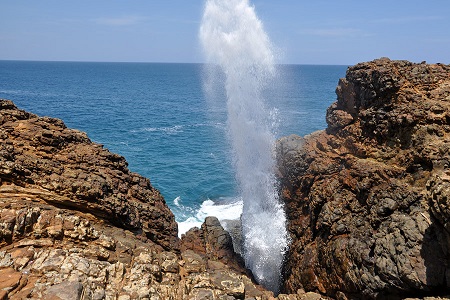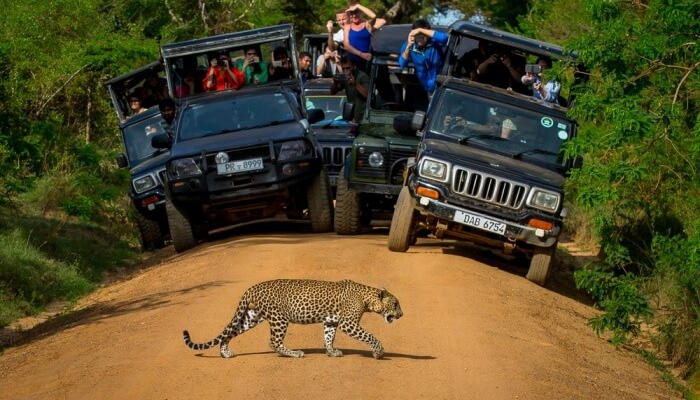
Yala, situated in the Hambantota District in Sri Lanka, offers many attractions for visitors. Most notably, the renowned Yala National Park Sri Lanka makes it a must-visit destination. Positioned 284.1 km from Colombo and 181.2 km from Kandy, Yala warmly welcomes tourists with its array of sights and activities. The area around Yala has hosted several ancient civilizations and the city proudly showcases its Buddhist heritage and rich wildlife biodiversity.
Alongside the iconic Yala National Park, visitors can explore nearby places such as Sithulpawwa, Magul Maha Viharaya, Lunugamvehera National Park, Kataragama Kiri Vehera, and Ruhunu Maha Kataragama Devalya. Yala offers thrilling activities like cycling, diving, safaris and sightseeing to ensure an unforgettable experience for travellers.
Yala National Park is the second largest and most frequented national park in Sri Lanka bordering the Indian Ocean. Located in the southeastern part of the country, spanning across the Southern and Uva Provinces, it was established as a wildlife sanctuary back in 1900. Encompassing an area of 979 km2 (378 sq mi), the park is renowned for its diverse wildlife and its role in conserving Sri Lankan elephants, Sri Lankan leopards, and various aquatic bird species. The area also consists of a diverse range of plant species. Yala encompasses diverse ecosystems, spanning from moist monsoon forests to freshwater and marine wetlands.
Yala National Park is divided into five blocks. There are four main entry points to the Park: Palatupana and Katagamuwa and the other two entrances are from Galge and Yala west gate on Buttala-Kataragama road. Few rivers and their tributaries flow across the park, serving as vital water sources for its wildlife. Several lagoons along the park's coastline further enrich its ecological diversity. There are two adjoining parks, Kumana National Park and Lunugamvehera National Park.
Yala is home to 215 bird species and six species are endemic to Sri Lanka. 44 species of mammals are resident in the Yala National Park. With the world's highest leopard densities, Yala is an exceptional destination for leopard safaris in Sri Lanka.
The Sri Lankan sloth bear, leopard, elephant and wild water buffalo are all threatened mammals that Yala harbours. Deer, Toque macaque, golden palm civet, red slender loris, and fishing cat are among many other mammals that can be seen in Yala. Many species of reptiles, amphibians, fish, invertebrates and butterflies can be observed in their natural habitat and amazing landscapes of the wilderness.
Yala is the most popular safari park in Sri Lanka and it presents a haven for nature enthusiasts, providing unparalleled wilderness adventures. Yala safari and camping excursions offer the greatest treasures of Yala National Park and an exceptional safari experience. Many accommodation options are also available in the vicinity.
The best time to visit Yala is between February and June during the dry season. The best time for leopard sightings is in the hot summer months, from April to July.
Visitors to The Summit Kandy can travel to Yala via Ella, another popular tourist destination that offers breathtaking views of Sri Lankas hill country. The train journey from Kandy to Ella takes around 6-7 hours and the distance is approximately 140 km.
The distance from Ella to Yala National Park is about 58.6 km and you can travel by taxi, bus or tuk tuk.
Some of the other must-see tourist destinations near Yala are Udawalawe National Park, Mirissa and Hiriketiya.
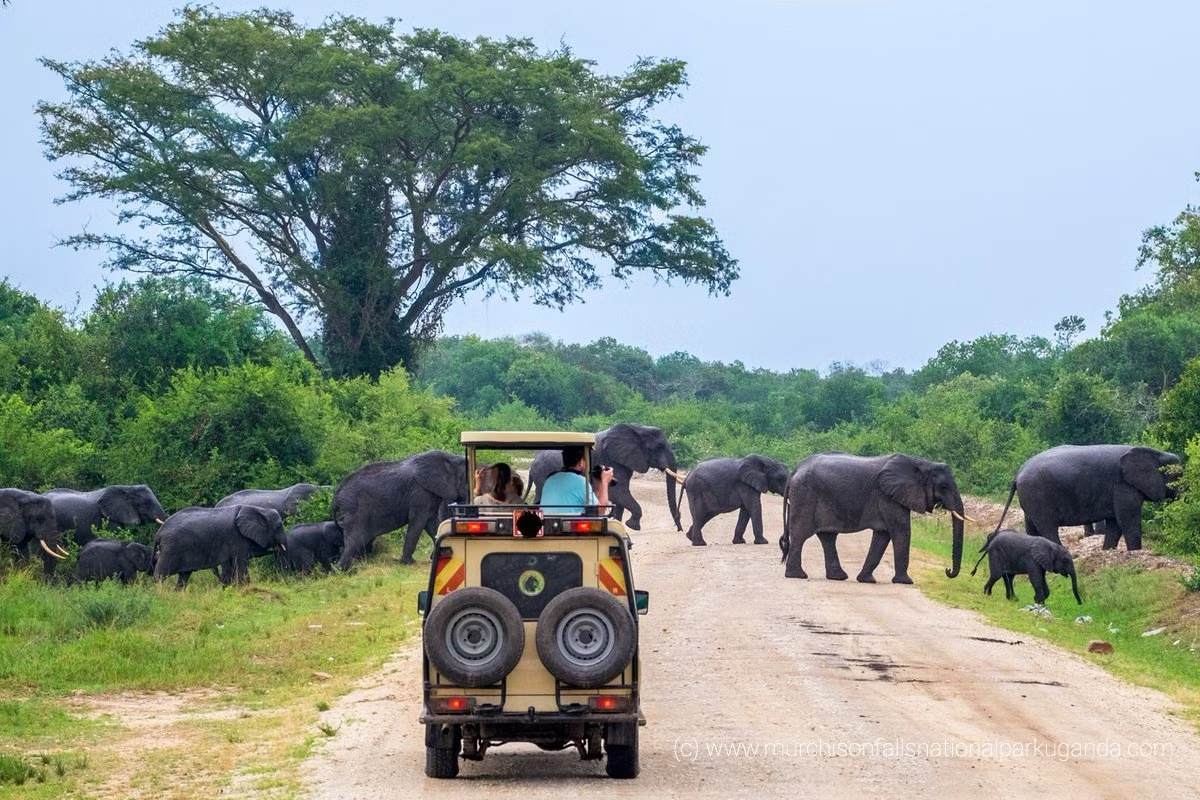
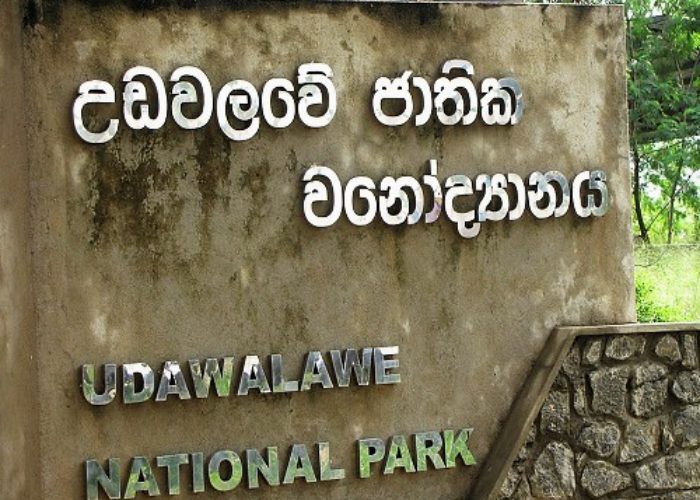
Udawalawe National Park is a popular tourist destination and ranks as the third most frequented park in Sri Lanka. Situated on the border between the Sabaragamuwa and Uva Provinces of Sri Lanka, Udawalawe National Park was established with the primary aim of offering refuge to diverse wildlife. Encompassing an extensive land area of 30,821 hectares (119.00 sq mi), the park serves as a vital habitat for a variety of flora and fauna, including the iconic Sri Lankan elephants and leopards. The distance from Yala to Udawalawe is approximately 74.3 km and it takes around 1 hour 30 minutes to travel.
Udawalawe safari tours provide visitors a memorable experience in the breathtaking wilderness of the park. Encounter diverse wildlife species, including majestic elephants, leopards, and colourful birdlife, amidst the park's scenic landscapes. Experienced guides lead informative excursions, offering insights into the park's ecosystem and conservation efforts.
Udawalawe camping sites offer a unique opportunity to immerse oneself in the heart of nature. Set up camp amidst lush greenery and serene surroundings, providing a tranquil escape from the hustle and bustle of city life. Wake up to the melodies of birdsongs and enjoy evenings under the starry skies, creating unforgettable memories of wilderness adventure.
Approximately 600 to 700 Sri Lankan Elephants inhabit this wildlife sanctuary, often forming sizable herds as they gather to drink water and feed. The Udawalawe reservoir serves as a magnet for numerous elephants, with an estimated 250 forming a permanent resident herd. The Udawalawe Elephant Transit Home was established within the park premises with the specific goal of caring for abandoned elephant calves. Once these calves mature and become self-sufficient, they are reintegrated into the park's ecosystem.
Apart from elephants and leopards, some of the other mammals that can be seen in Udawalawe are rusty-spotted cat, fishing cat, Sri Lankan sloth bear, Sri Lankan sambar deer, Sri Lankan axis deer, Indian muntjac, Sri Lankan spotted chevrotain, wild boar, water buffalo and so on.
Udawalawe is also an excellent location for birdwatching. Endemic species such as Sri Lanka spurfowl, red-faced malkoha, Sri Lanka grey hornbill, brown-capped babbler, and Sri Lanka junglefowl are among the breeding resident birds. White wagtail and black-capped kingfisher are rare migrants. A variety of water birds visit the reservoir, including cormorants, the spot-billed pelican, Asian openbill, painted stork, black-headed ibis and Eurasian spoonbill.
The open parkland attracts birds of prey such as white-bellied sea eagle, crested serpent-eagle, grey-headed fish eagle, booted eagle, and changeable hawk-eagle. Landbirds are in abundance, and include Indian roller, Indian peafowl, Malabar pied hornbill and pied cuckoo. Several species of reptiles and fish are also found in the park.
Udawalawe accommodation ranges from luxurious resorts to cozy guesthouses and safari lodges. Visitors can relax in comfort after a day of wildlife exploration, enjoying amenities and hospitality amidst the stunning backdrop of the national park.
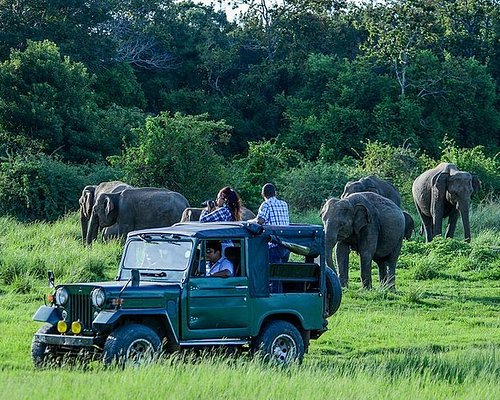
Udawalawe is also an excellent location for birdwatching. Endemic species such as Sri Lanka spurfowl, red-faced malkoha, Sri Lanka grey hornbill, brown-capped babbler, and Sri Lanka junglefowl are among the breeding resident birds. White wagtail and black-capped kingfisher are rare migrants. A variety of water birds visit the reservoir, including cormorants, the spot-billed pelican, Asian openbill, painted stork, black-headed ibis and Eurasian spoonbill.
The open parkland attracts birds of prey such as white-bellied sea eagle, crested serpent-eagle, grey-headed fish eagle, booted eagle, and changeable hawk-eagle. Landbirds are in abundance, and include Indian roller, Indian peafowl, Malabar pied hornbill and pied cuckoo. Several species of reptiles and fish are also found in the park.
Udawalawe accommodation ranges from luxurious resorts to cozy guesthouses and safari lodges. Visitors can relax in comfort after a day of wildlife exploration, enjoying amenities and hospitality amidst the stunning backdrop of the national park.
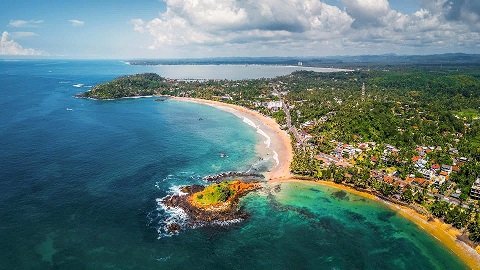
Mirissa is a small town on the south coast of Sri Lanka, located in the Matara District of the Southern Province. It is approximately 127 km from Yala to Mirissa and takes around 2 hours to travel. Yala to mirissa distance is 115.3 KM via Southern Expressway E01. Situated at an elevation of 4 metres (13 ft) above sea level, Mirissa's beach and nightlife make it a popular tourist destination. Mirissa is also a fishing port and a popular site for water sports, such as surfing and snorkelling.
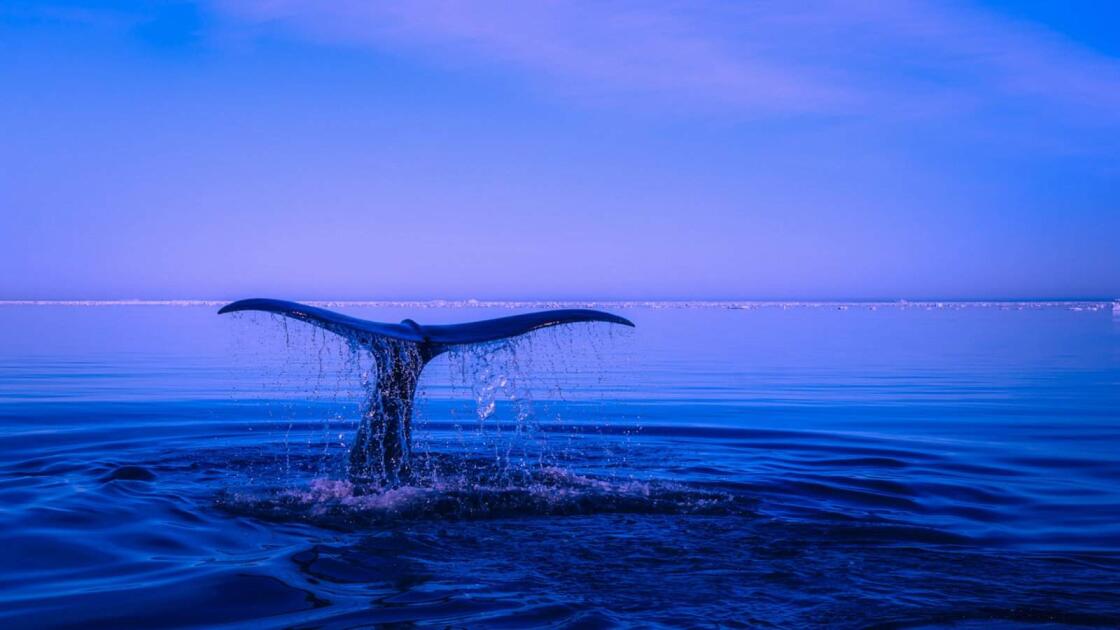
Mirissa Sri Lanka emerges as the perfect destination for whale and dolphin watching. The best time to observe whales and dolphins is from November to April, as these months transform the seas into a vibrant playground for various whale and dolphin species. Mirissa is one of the world's top locations for watching blue whales, the largest animal in the world. Among the other frequently encountered whales are sperm whales, killer whales, Bryde's whales and short-finned whales. Some of the dolphins that can be spotted are bottlenose dolphins, striped dolphins, etc.
An idyllic tropical paradise, Mirissa Beach showcases soft, pale sand against the backdrop of azure waters bordered by a line of coconut palms. The western side stands out for its expansive and pristine stretch of sand, while the bay gradually curves towards the east, where it meets the bustling Galle-Matara Road. Positioned near the heart of Mirissa bay is a picturesque sandbar, linking to a small island accessible during low tide. Surfers can find a decent right point break at the western tip of the beach. Lounging under the sun and observing the surfers is a great way to enjoy an afternoon.
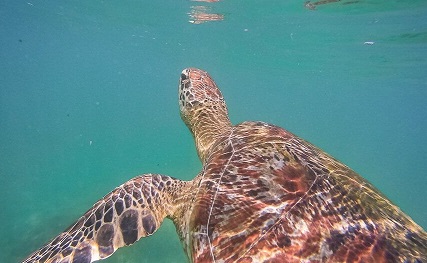
Turtle Bay Mirissa is a wonderful snorkelling site and a great place to potentially spot a few turtles. There are seven species of turtles in the world, five of which can be found in Sri Lanka: the Green Turtle, Hawksbill Turtle, Leatherback Turtle, Loggerhead Turtle and the Olive Ridley Turtle. These turtles frequent the warm waters of the southern coast, especially along the coast between Unawatuna and Mirissa where they come ashore to nest. The bay is extremely picturesque with clear blue waters and a golden sandy beach which is dotted by tall coconut trees. Turtle Bay is a haven for endangered turtles. You can visit a turtle hatchery to learn more about the creatures journey and the conservation efforts of Sri Lankas turtle population.
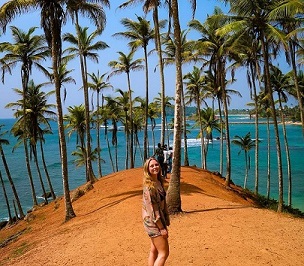
Explore Coconut Tree Hill in Mirissa which encompasses a private coconut estate adjacent to a temple, positioned atop a lofty cliff that offers stunning views of the shimmering Indian Ocean and the untouched stretch of golden beach. Upon reaching the summit, you'll be greeted by a breathtaking panoramic vista of Mirissa and its radiant coastline. The Coconut Tree Hill is a must-visit destination in Sri Lanka, offering an ideal vantage point for witnessing the dramatic island sunset.
Parrot Rock Mirissa, situated along the shores of Mirissa Beach, appeals primarily to the adventurous traveller. Positioned about 50 feet from the shore amidst the serene blue waters and golden sands of Mirissa Beach, Parrot Rock is a small rock island offering one of the most picturesque vistas of the beach. Once you reach the summit, you can marvel at the breathtaking expanse of the surrounding sea and the extensive golden beach stretching for miles in both directions. The best time to experience its magic is at sunset, when the sky transforms into hues of blue and pink.
Secret Beach in Mirissa is undoubtedly a destination not to be missed during your time in Mirissa. This single spot presents many activities, ranging from swimming and snorkeling to simply relaxing on the shore. Tucked into a sheltered cove, the beach is embraced by small hills adorned with lush green palm trees on either side, creating several smaller beach areas.
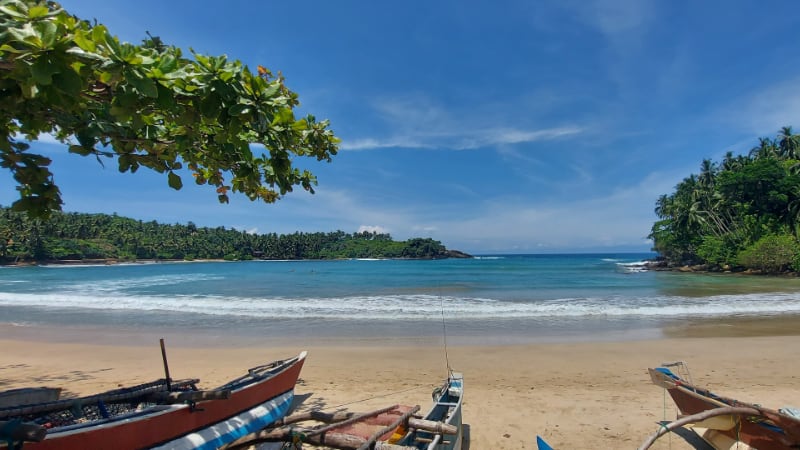
Hiriketiya Beach, situated along Sri Lanka's southern coast, offers a serene retreat akin to paradise. An exquisite bay neighbouring the southern town of Dikwella, it is a famous surfing spot in Sri Lanka. Hiriketiya Bay spreads along its 0.5-kilometre inlet and goes from a heavy reef to a mellow beach break. The variety of the surf in Hiriketiya Beach offers something for beginner surfers as well as professionals.
Distance from Yala to Hiriketiya is approximately 102 km and it takes around 1 hour and 45 minutes via E01 (Southern Expressway).
Hiriketiya Beach is a horseshoe-shaped bay with soft sand and gorgeous views. For anyone longing for tranquility and a peaceful escape to unwind and rejuvenate, Hiriketiya is the best place to visit. With swaying palm trees adorning the shoreline, you can experience a relaxed atmosphere at Hiriketiya Beach while enjoying great food from the beachside cafes.
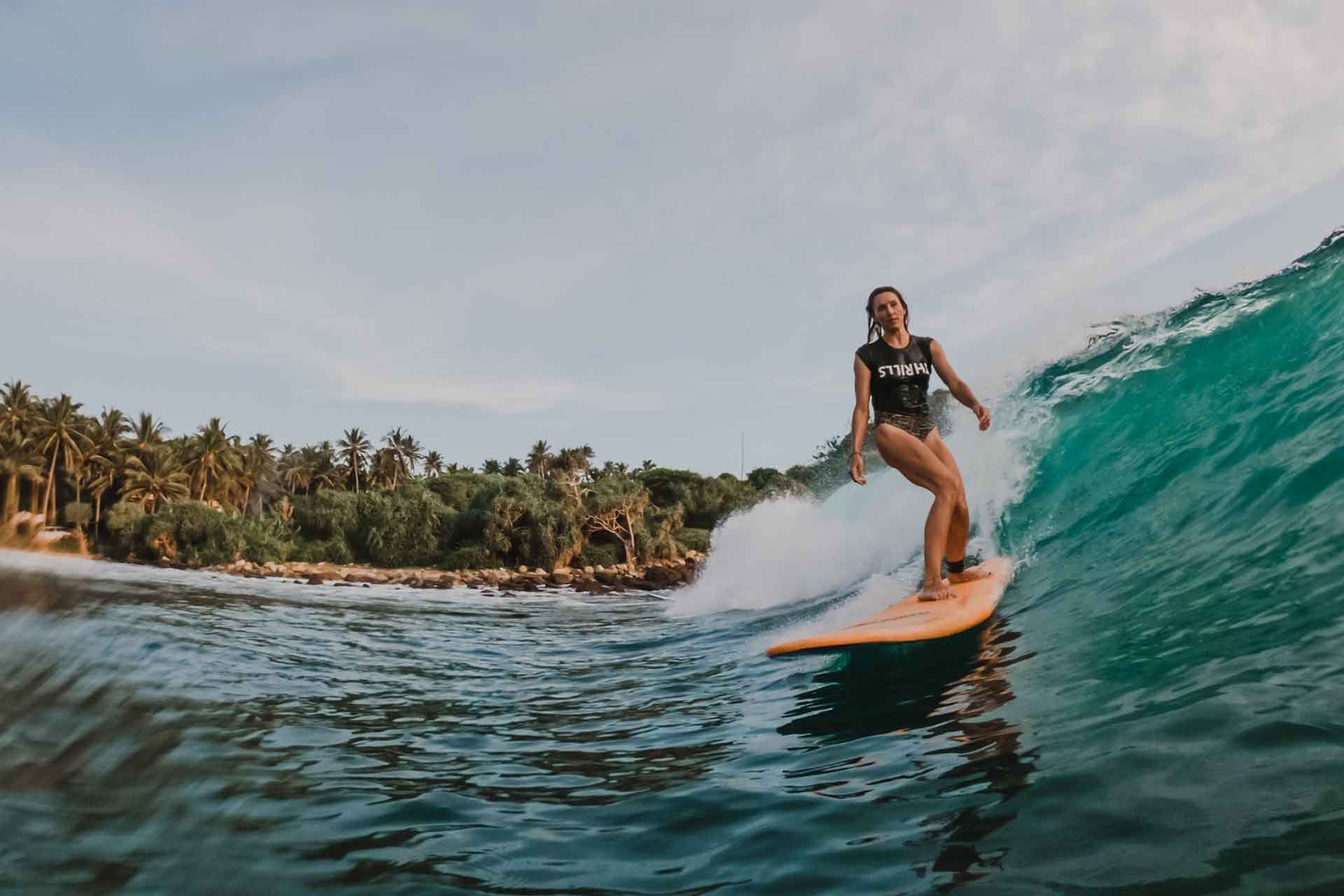
Hiriketiya is the best destination for sun, surf and sand. Hiriketiya accommodation offers a range of choices, from budget hostels to co-living places, boutique guesthouses and surf camps.
Talalla Beach, a secluded bay on the south coast, is a long, white sandy beach near Hiriketiya. It is just 20 minutes west of Dikwella and an untouched paradise. Talalla Beach is a calm, relaxed oasis offering a longer stretch of shoreline when compared to Hiriketiya. Surfing, yoga, Ayurveda massages, snorkelling, swimming and diving are some of the key activities in the area.
Discover the Hummanaya Blow Hole while you explore the southern coast in Sri Lanka. It is one of the main tourist attractions in the area and is situated 5 km from Dikwella. Hummanaya is the only known blowhole in Sri Lanka and is considered to be the second largest blowhole in the world reaching an impressive 30 m in height. It is a natural wonder and one of the most unique features in the island.
